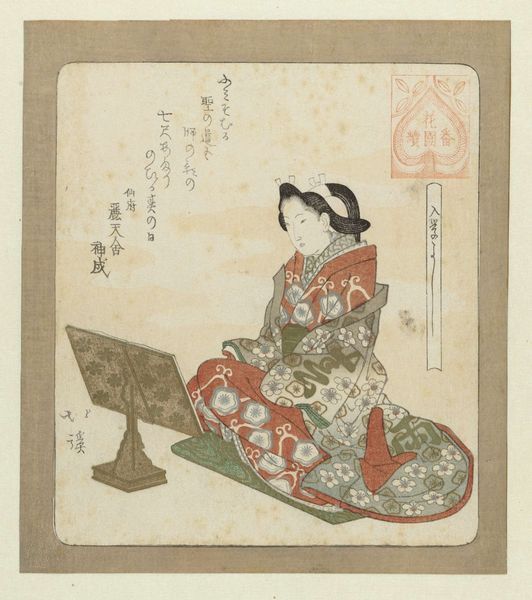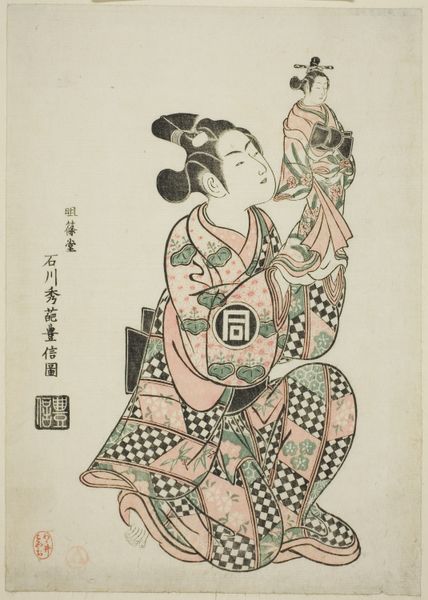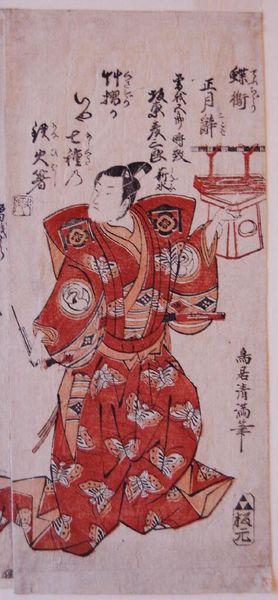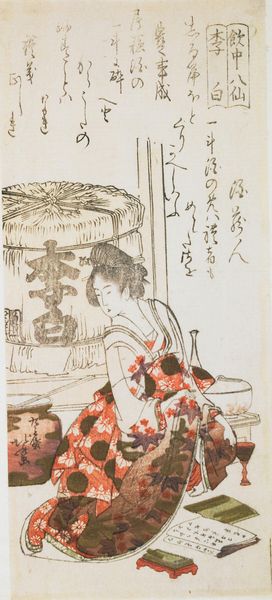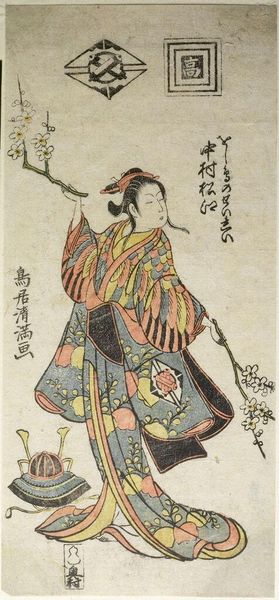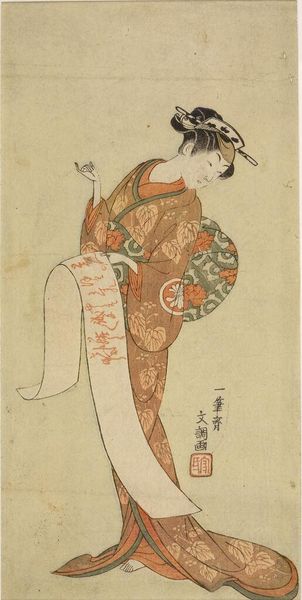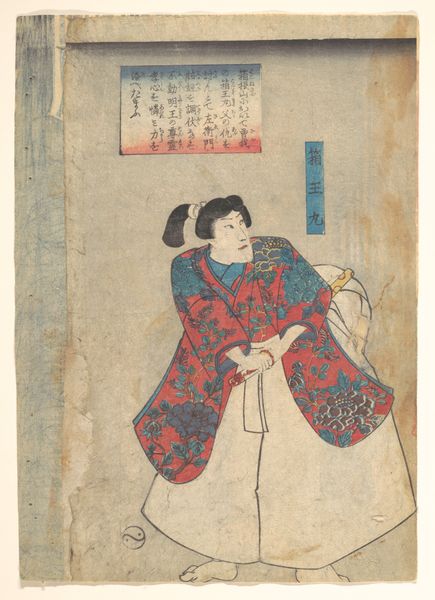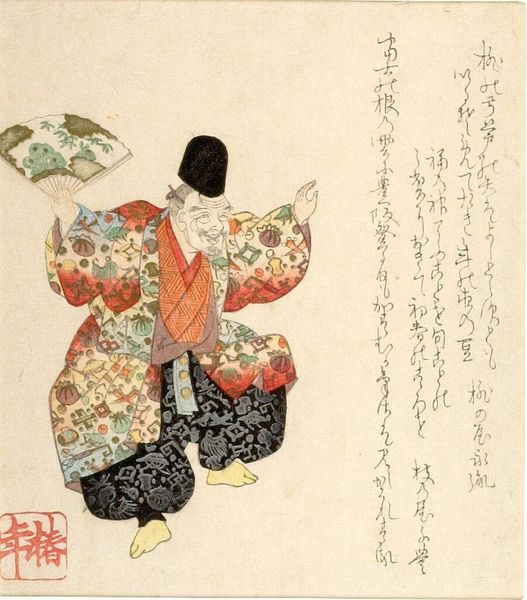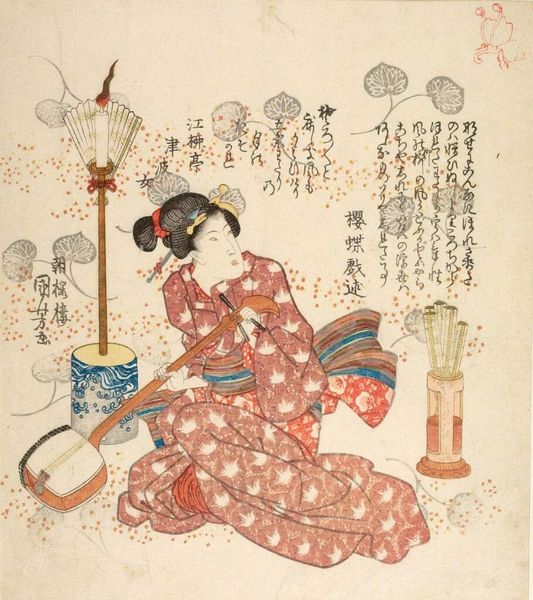
drawing, coloured-pencil, paper
#
portrait
#
drawing
#
coloured-pencil
#
asian-art
#
paper
#
coloured pencil
Copyright: Public Domain: Artvee
Editor: We’re looking at Helen Hyde’s “Little Dancer of the ‘No’” from 1916. It's a coloured pencil drawing on paper. There’s a real sense of stillness about this work – a sort of quiet observation. How do you interpret this drawing from a formal perspective? Curator: The visual organization here is striking. Notice how Hyde positions the young figure, a central form delineated with precise colored pencil strokes, almost lost in the expanse of blank paper. The economy of line is key: minimal marks define the dancer's kimono and posture. Consider the function of this emptiness around the figure. Editor: It makes her seem isolated, maybe? Almost like she’s waiting. Curator: Perhaps. The composition emphasizes negative space. Do you see how the slightly faded colours enhance the meditative mood, reducing the image to its bare essentials? Colour acts structurally, creating balance. The red accents pull the eye. Editor: Yes, and there's that signature cartouche in the corner – its shape also seems very deliberate. Curator: Precisely. The deliberate use of line and placement underscores a compositional integrity. We should think about how colour contributes, as an abstract design element that exists separately but also enhances the thematic unity in the work. Colour supports the meaning. Editor: It’s amazing how much you can see just by looking at the artistic choices, the lines and colors themselves! I will definitely pay closer attention to that. Curator: Absolutely. This careful consideration refines our aesthetic awareness of a work’s composition, appreciating the artistic means for eliciting such contemplative impressions.
Comments
No comments
Be the first to comment and join the conversation on the ultimate creative platform.
